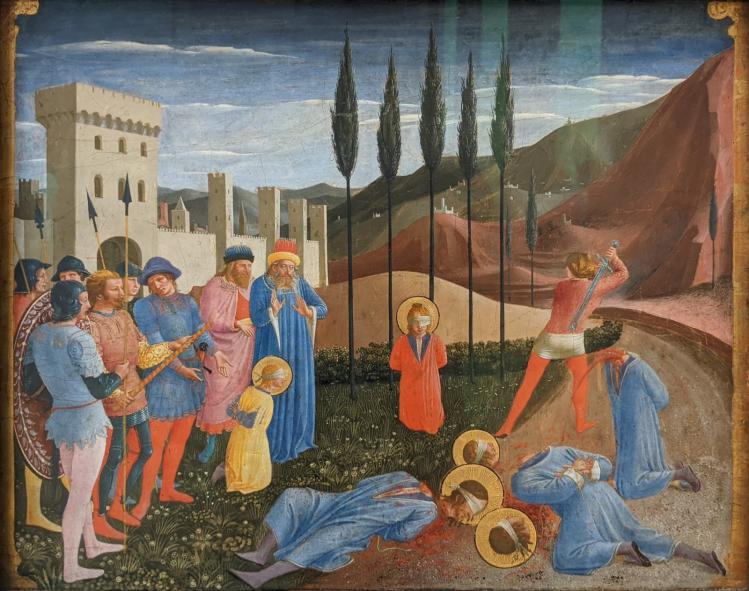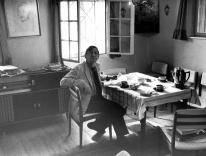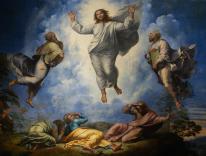
The preface to Kyle Smith’s book about the commemoration, celebration, and imitation of those who testified to Christ even at the cost of their lives—the martyrs—provides unusual insight into the book’s character. He tells us there that his interest in the topic was triggered by the discovery of Antonio Gallonio’s sixteenth-century Treatise on the Instruments of Martyrdom in a Toronto used bookstore. Reading this treatise stimulated Smith to undertake a research project that convinced him “how Christianity became (and how it still remains) a cult of the dead.” The reader is thus prepared for an investigation that combines an antiquarian’s interest in the oddities of historiography with a passion for the ways in which ritual, literature, and art intersect. (In addition to many scattered illustrations, the volume contains sixteen handsome plates.) Whether “cult of the dead” fairly characterizes Christian history is another matter, to which I will return.
Smith’s preferred approach to his subject is indirect, and each of his chapters has a circumambulatory character. He begins his opening chapter, “The First of the Dead,” with a reminiscence of walking his children through St. Alban’s Square in Toronto, then moves to the Venerable Bede’s account concerning that martyr, then makes his way to the second-century Letters of Ignatius of Antioch, who passionately longed for martyrdom, and finally reaches the New Testament for a consideration of Jesus and his followers (above all, Stephen) as martyrs. Smith accepts the conventional contemporary view that the evangelist Luke created the image of the martyr in his portrayal of Jesus’ death based on the Greco-Roman model of “Noble Death,” and then, in his depiction of Stephen’s death by stoning, set in motion a tradition (a “genre”) that persisted for centuries. Smith quotes approvingly Candida Moss’s “inescapable but repugnant conclusion” that “dying for Christ may be a central, rather than peripheral, part of the Christian experience.”
Subsequent chapters offer similar scholarly peregrinations. In “The Names of the Dead,” the chief fascination is the literary labors of the ancient ecclesiastical historians Eusebius and Sozomen, who preserved accounts of early martyrs, and Cureton’s nineteenth-century identification of a fifth-century Syriac manuscript that contained, among other things, the lost original of Eusebius’s Martyrs of Palestine. In the lengthy chapter titled “The Remains of the Dead,” Smith leads his reader from the contemplation of Louis IX’s Sainte-Chapelle in Paris to a bemused consideration of every peculiar moment and odd turn in the centuries-long trade in the relics of martyrs. That trade certainly had seamy aspects, but it was based on the conviction that through such relics God performed miracles. Smith includes in his survey the persistent though contentious claims made for Veronica’s Veil and the Shroud of Turin.
Smith’s chapter on “The Feasts of the Dead” provides him with the opportunity to move from the fairly obvious construction of the sanctoral liturgical cycle (in which martyrs occupy a significant if by no means exclusive place) to a detailed general examination of the marking of time through lunar or solar calendars, and from there to an appreciation of the way the sixth-century Rule of Benedict structures the moments of the day as times for prayer.
Another dimension of martyrdom is a life dedicated to solitude and asceticism, which from the time of the desert monks in the fourth century was regarded as a sort of “living martyrdom” available to those living after the age of persecution. In “The Living Dead,” Smith examines the rituals and practices attached to the medieval recluses known as anchorites (the most famous of whom was Julian of Norwich). He pays particular attention to a hortatory work called Ancrene Wisse, written by a male confessor for female solitaries.
The author’s fascination with the literary and antiquarian is again evident in “The Miracles of the Dead.” Here we find no sober reflection on the reality or non-reality of the miraculous, but instead a literary journey organized by the phenomenon of pilgrimage to the sites of martyrs’ remains for the sake of healing (physical or spiritual). Smith begins with the Pardoner’s tale in Chaucer’s Canterbury Tales, segues to Thomas Becket and the miracles associated with him at Canterbury, then takes up literary guidebooks for pilgrims, such as the twelfth-century Peregrinatio Compostellana, then quickly surveys miracle stories in the gospels, Augustine’s City of God, Theodoret’s Religious History, and Caesarius of Heisterbach’s Dialogus Miraculorum, before returning, finally, to Thomas Becket and the collection of wonders associated with him. The chapter is itself a sort of pilgrimage that, without revealing the real point of the journey, offers many and various delights along the way.
In “The War for the Dead,” Smith takes up the Reformation and Counter-Reformation, with the Protestant side dismissing relics and the miracles associated with them as Romish superstitions, and the Catholic side intensifying its commitment to the martyrological tradition. Thus, the Catholic Philip Neri recovered new relics from digs in the catacombs, and Cesare Baronio published a twelve-volume Ecclesiastical Annals, which celebrated the role of martyrdom through the Church’s history. (The earlier-mentioned Antonio Gallonio was one of his assistants.) Far more influential was the Protestant counterattack, especially John Foxe’s 1563 Actes and Monuments—popularly known as Foxe’s Book of Martyrs—which recounted the deaths of those killed as heretics during the reign of Mary I (1553–1558). As Smith notes, Foxe’s Book of Martyrs—together with the King James Bible and the Book of Common Prayer—was critically important as a shaper of reform, and above all as spur to negative attitudes toward Catholics.
The final full chapter, “The Legends of the Dead,” moves, somewhat uneasily, from the legends attached to the saints’ intervention during the time of plagues and the Black Death to the development of critical historiography concerning these legends, which had, through books like The Golden Legend—the most widely disseminated book of the medieval period—wildly proliferated. Smith traces the development of the Bollandists (named after Jean Bolland), who sought to distinguish within all these accounts the historical from the fanciful. The project began in the seventeenth century and still continues, with sixty-eight folio volumes published to date.
As my summary suggests, there is a considerable amount of sheer erudition in Smith’s leisurely circumnavigations around his selected topics, and this book will undoubtedly delight those satisfied by a display of arcane historiographical information.
The thoughtful student of Christianity may, however, have a number of serious questions concerning Smith’s treatment of martyrdom. He seems to join an extraordinarily strong thesis to an almost complete lack of genuine argument. In what sense, for example, has he provided—as the subtitle announces—a “brief history of Christianity”? The descriptor “brief” may be accurate in the sense that Smith’s treatment stops in the seventeenth century. He states in the preface, however, that Christianity “still remains” a cult of the dead, even though he pays no attention to the continuing tradition of Christian martyrdom, above all in the twentieth and twenty-first centuries. Perhaps this is because the contemporary persecution and killing of believers is still only an “event” and has not yet become a “genre.” Or perhaps the term “brief” accurately communicates the very partial character of his study; the topic of martyrdom, while certainly important, scarcely captures the totality of Christian life (and death) through the ages. To take a small but telling example: the calendar of saints celebrated in the liturgy and in litanies gives martyrs a special place but includes with them all the confessors, and virgins, and odd and spare holy ones who witnessed to God through the ages.
Smith’s use of the New Testament in particular is less than adequate. His acceptance of the contemporary scholarly conceit that the evangelist Luke “invented” the image of the noble death for Jesus along the lines of Greco-Roman models fails to take into account such Jewish precedents of witness in the face of persecution as are found in the prophets or the Second Book of Maccabees. More important, the language of “witness/witnessing” (martys/martyrein) in Luke–Acts is pervasively connected to all forms of witnessing, but is used only once—and then in passing—in connection to Stephen’s (not Jesus’) death (Acts 22:20). In contrast, the same language is prominently used in connection with Jesus’ own testimony in Johannine literature (the Gospel of John and the Book of Revelation) and even once in Paul (1 Timothy 6:13). There is very little evidence, moreover, that either the Gospel of Luke or the Acts of the Apostles were much read or had much influence before Irenaeus. Not everything in history is a literary trope.
As for Candida Moss’s conclusion, mentioned earlier, that martyrdom was central to Christian experience, why is this “repugnant”? That word suggests that martyrdom was something distasteful, even reprehensible. Smith never seems to consider that martyrdom could have been something noble and courageous, that ancient believers took their commitment to Christ so seriously that they offered their lives as a witness to that commitment, that despite all the bizarre practices associated with their relics, for example, the devotion to relics was not itself silly, but based on the conviction that, as Smith puts it, “martyrs’ bones were not dead: saints were still present in their relics…. [H]ow else could relics work their miracles if the saints and their divinely granted power were not still there?”
But Smith’s statement does not go far enough. The fundamental error in this book lies in its calling Christianity—or for that matter, the veneration of the martyrs—a “cult of the dead.” It is anything but that. Christ was not worshiped for the manner of his death but because he was raised from the dead as “Life-giving Spirit” (1 Corinthians 15:45); Stephen was the prototypical martyr because in his witness he saw the risen Christ; the martyrs gave their mortal lives as witness precisely to the truth of the Resurrection; the honor shown martyrs and the prayers addressed to them is based on the same belief: that, with all the other saints, they are alive in the presence of God; and that, as members of the Church triumphant, they can come to the assistance of the afflicted among the church militant. Christianity is not, in fact, a cult of the dead. It is, rather, the celebration of God’s life.
Cult of the Dead
A Brief History of Christianity
Kyle Smith
University of California Press
$34.95 | 384 pp.
Please email comments to [email protected] and join the conversation on our Facebook page.
Previous Story
Renunciation and Christian Happiness
Next Story
An Unintended Icon?


